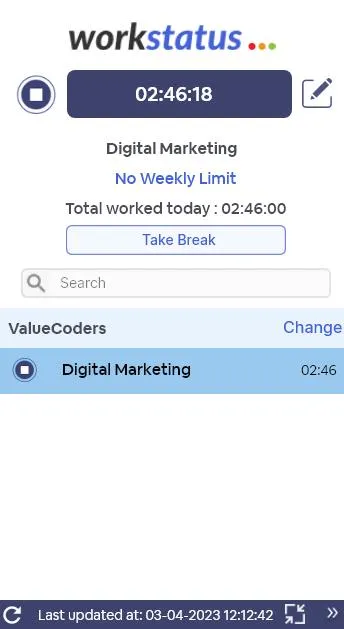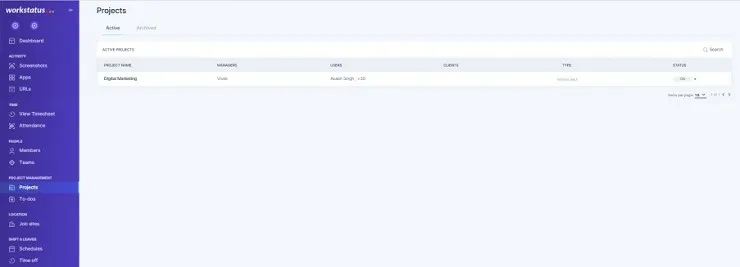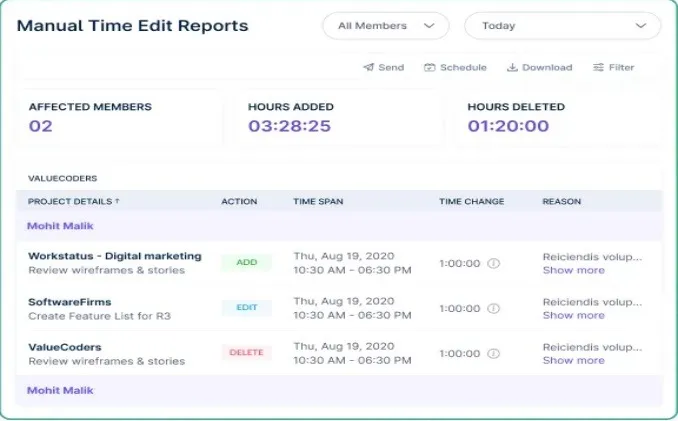Table of Contents
Trust plays a key role in shaping the future of any organization. Without it, productivity might suffer a lot.
Let’s see an example of Maria.
Maria had been working as a project manager at a startup. She enjoyed her work, but something was disturbing her.
She noticed that some of her team members were constantly-
- Struggling with maintaining timesheets
- Being unproductive
- Leaving early
- Taking long breaks
- Showing up late
She had a feeling that the team was not taking their work seriously. And sensed the feeling of mistrust among the members.
She needed to find a way to establish it with her team.
So, one day, Maria decided to implement an automated timesheet system to track her team’s work hours accurately.
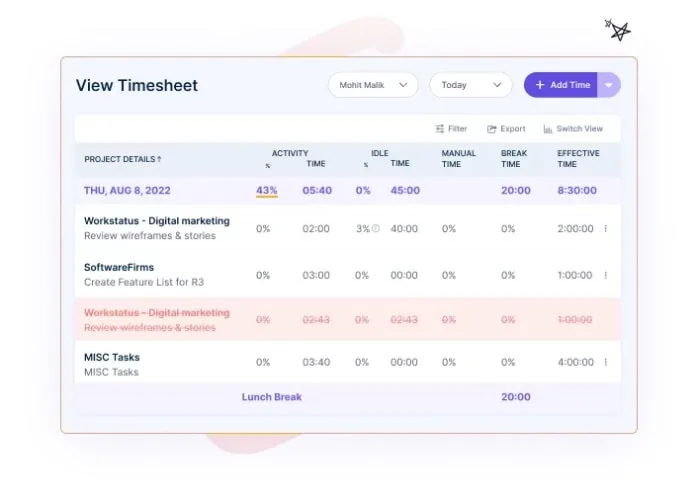
However, as they started using the system, they realized it was effortless and user-friendly.
Now Maria and her team can easily-
- Track work hours and breaks
- Monitor productivity in real-time
- Download reports and timesheets
It eliminated doubt about who was working and who was not, establishing trust between Maria and her team.
Automated timesheet tools like Workstatus can boost workforce trust by providing accurate and transparent records of employee work hours and output.
This blog will show how automated timesheets can help establish and maintain workforce trust.
Let’s dive in-
The Problem With Manual Timesheets
-
Inaccuracy and Inefficiency
Many organizations use manual timesheets to record the time worked by employees.
However, they might not give you an accurate picture of the time spent on any project.
Inaccurate timesheets can create discrepancies in payroll calculations, leading to incorrect employee pay or excessive overtime costs.
Moreover, manual timesheets are time-consuming, and impact overall productivity.
-
Lack of Transparency and Accountability
Manual timesheets make it difficult for companies to track employees’ work schedules and activities.
Thus, lacking transparency and accountability.
Anyone can manipulate their hours worked, leading to a lack of trust between employers and employees.
Employers may remain unaware of the time their employees work, leading to a loss of productivity and increased costs.
Furthermore, manual timesheets provide no audit trail for tracking changes or correcting errors, making resolving disputes challenging.
Understanding Employee Timesheet Fraud
Employee timesheet fraud is a serious problem that costs companies thousands of dollars annually.
Fortunately, automated timesheets solve this issue by providing an accurate and transparent record of employee work hours.
In this infographic, we will explore the impact of automated timesheets on business success and how they can help end timesheet fraud.
Getting started with Automated Timesheets – Workstatus
1. Understanding Workstatus
Workstatus is an automated timesheet system that enables companies to track time and productivity accurately.
You can allocate resources efficiently and monitor project progress seamlessly with real-time project tracking and resource management tools.
Key Features:
- Online Timesheets
- Automated Reporting
- Productivity Tracker
- Attendance Management
- Idle Time Tracker
- iOS and Android Apps
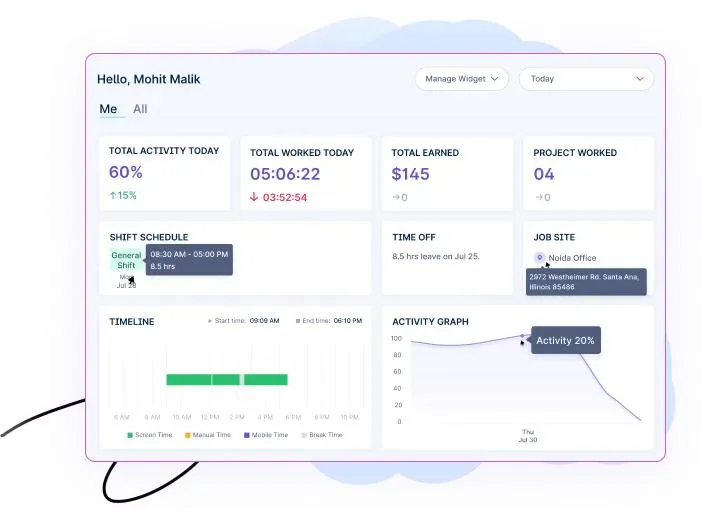
Also, it integrates with a wide range of project management tools, streamlining workflows and boosting productivity.
2. Getting Started with Workstatus
 a. Signing up for an account:
a. Signing up for an account:
- Visit the official website of Workstatus.
- Create your account by providing your name, email address, and password.
- And you’re ready to start using Workstatus.
b. Setting up projects and tasks:
- After signing up, you can create projects and tasks in Workstatus.
- Click on the “Projects” tab to add a project.
- Give your project a name and description, and you can add tasks by clicking the “Add Task” button.
c. Adding team members
- To add team members, go to the “Team” tab and click on “Invite Members.”
- Enter the email addresses of the team members you want to invite, and they will receive an email inviting them to join your Workstatus account.
d. Start time tracking
- Ask your teams to download the Workstatus time tracker from its website.
- Click on the tracker to start tracking the time of your teams.
3. Using Workstatus For Time Tracking
a. Tracking time for projects and tasks
To track time for projects and tasks in Workstatus, select the project or task you want to track time for.
Click the “Start Timer” button, and Workstatus will automatically track your time.
When you’re finished, click the “Stop Timer” button to stop tracking your time.
b. Editing and approving timesheets
To edit and approve timesheets in Workstatus, go to the “Timesheets” tab.
Here, you can see all the timesheets for your team members.
You can edit and approve timesheets as needed, and Workstatus will automatically update the data for the project and task accordingly.
c. Generating reports and analytics
To generate reports and analytics in Workstatus, click the “Reports” tab. Here, you can view reports for projects, tasks, and team members.
You can generate, download, and export the following reports:
- Time & Activity
- Weekly
- Timesheet Approval
- Project & Todo
- Attendance
- All Reports
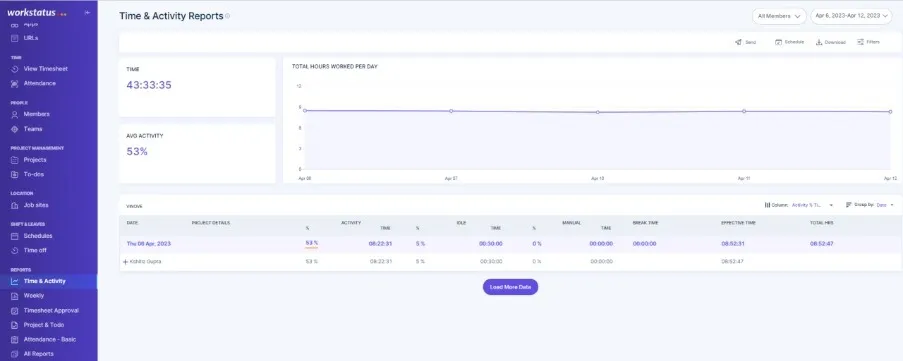
These reports provide valuable insights into your team’s productivity, performance, and time usage, allowing you to make data-driven decisions for your business.
4. Best Practices For Using Workstatus
-
Encouraging team members to use Workstatus regularly
To ensure maximum benefits from Workstatus, it is important to encourage team members to use it regularly.
You can achieve this by highlighting its benefits, showing how it can improve team collaboration and productivity, and setting expectations for usage.
Also, employees can use Workstatus as proof of work in case of any conflict. It also helps companies identify top performers for recognition and award.
-
Providing training and support for using the software
To ensure that team members are using Workstatus effectively, it is important to provide adequate training and support.
It can include video tutorials, documentation, and regular check-ins to address any issues or questions.
-
Customizing settings to fit the needs of the business
To optimize the use of Workstatus, it is vital to customize the software to fit the business’s specific needs.
It can include customizing settings such as work hours, project settings, and notifications to ensure that the tool is tailored to the unique needs of the team and organization.
-
Ensuring compliance with labor laws and regulations
When using Workstatus, ensuring that the software complies with all relevant labor laws and regulations is crucial.
It includes ensuring that the software accurately tracks and records employee work hours, adheres to overtime rules, and complies with relevant privacy laws.
Regular reviews and updates to the software can help ensure ongoing compliance.
Overcoming Resistance To Change
Overcoming resistance to change can be challenging, but it is essential to implement new processes or systems successfully. Some effective strategies include:
- Involving team members in the change process
- Communicating the benefits clearly and regularly
- Addressing any concerns or questions openly and honestly
- Providing training and support to ensure a smooth transition
Additionally, celebrating milestones and successes can help maintain momentum and build confidence in the change.
Closing Thoughts
Implementing automated timesheets and proof of work can help boost workforce trust by providing a transparent and accurate record of employee work hours and productivity.
By reducing the potential for errors and fraud, these systems can improve employee morale, increase productivity, and ultimately benefit the entire organization.
As technology advances, it is important for companies to explore automated timesheet tools like Workstatus and consider how they can improve their operations and build trust with their workforce.
FAQs
Ques. What is automated time tracking, and how does it work?
Ans. Automated time tracking is a software system that uses technology to record and track employee work hours. It uses various methods such as GPS location tracking, biometric data, or project/task tracking to record and report employee work hours accurately.
Ques. Can automated timesheets prevent fraud and abuse in the workplace?
Ans. Yes, automated timesheets like Workstatus can prevent fraud and abuse in the workplace by providing an accurate and transparent record of employee work hours.
Using features like GPS tracking, facial recognition, or project/task tracking makes it difficult for employees to falsify their work hours, reducing the potential for fraud and abuse.
Ques. Which is the best time tracking app for businesses?
Ans. Workstatus is a popular time-tracking app offering project and task tracking, real-time activity monitoring, automatic timesheets, and more.
It also allows for customization to fit the unique needs of organizations, making it a flexible and versatile option.


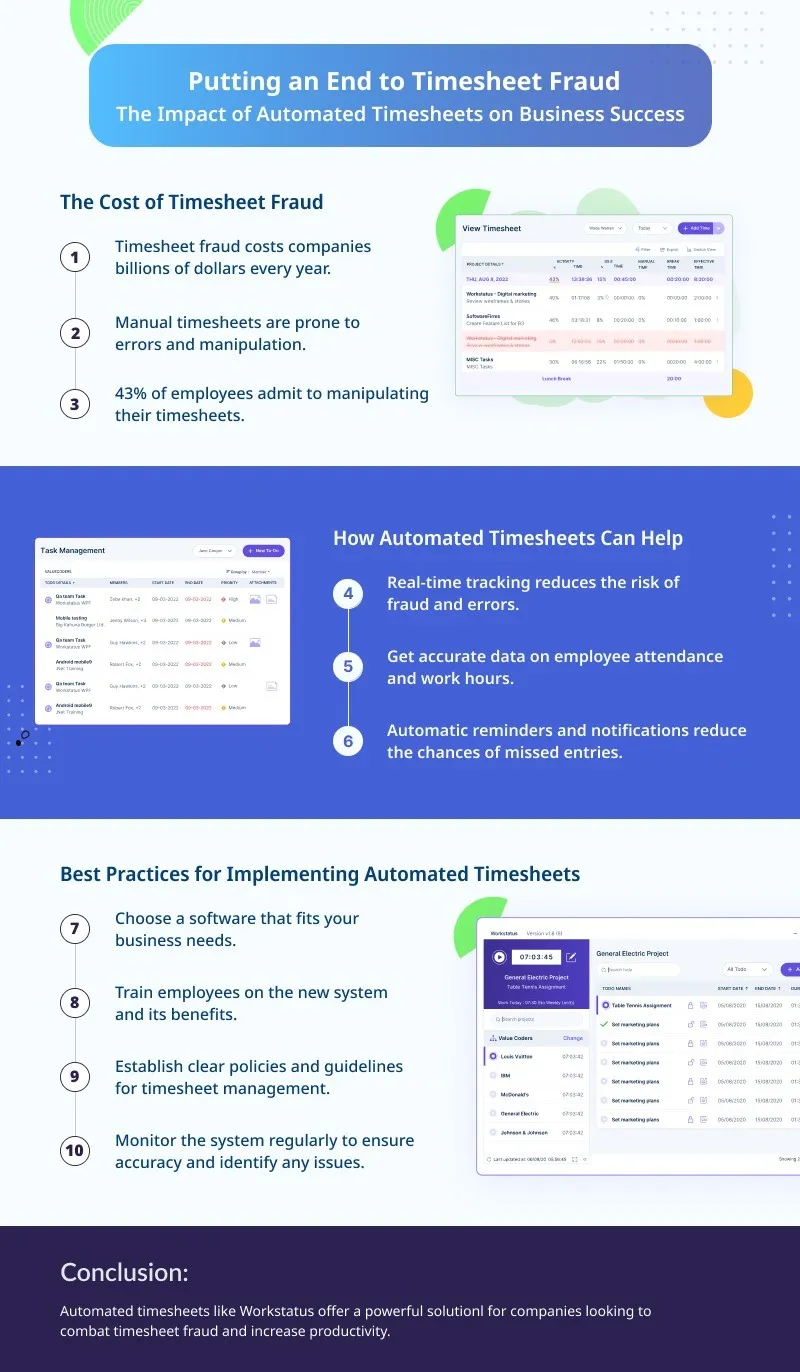
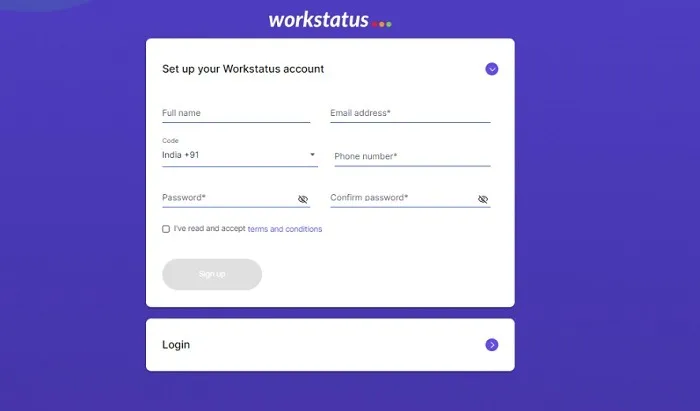 a. Signing up for an account:
a. Signing up for an account: 